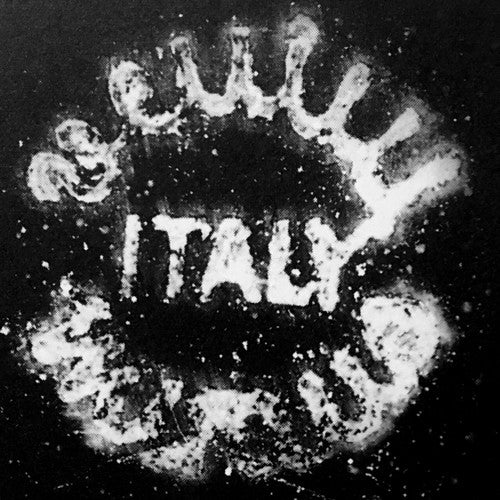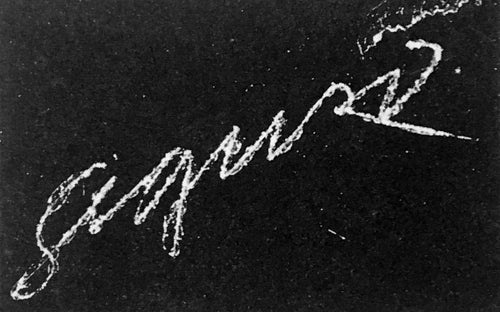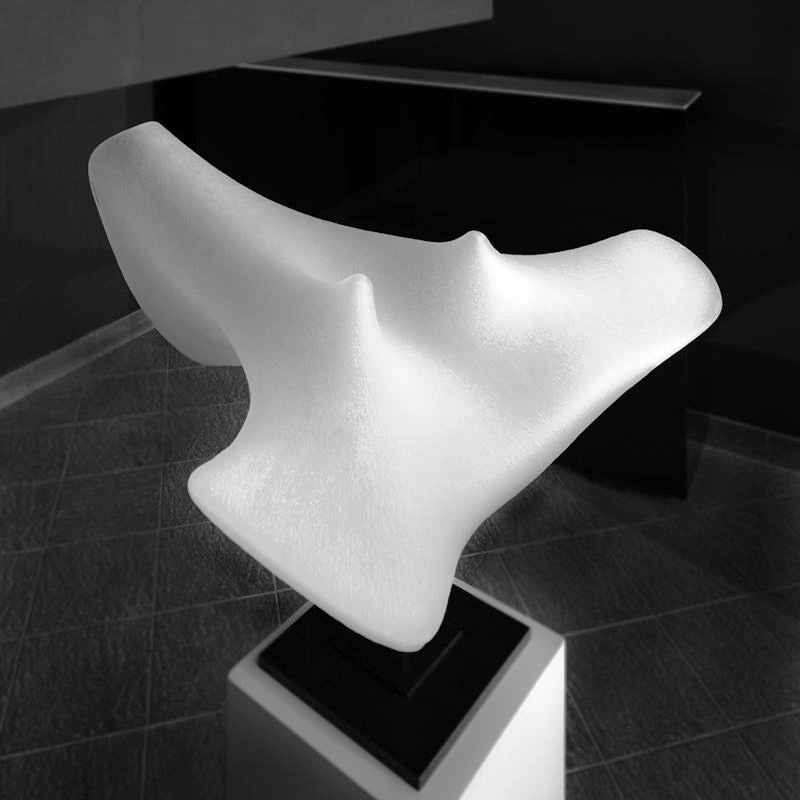Until the first half of the 70s, Murano glass producers were not accustomed to signing the objects they produced.
One of the exceptions was the Compagnia di Venezia and Murano - Pauly & C . - which since the early years of the last century, occasionally applied an engraving that represented a crown over the letters CVM.
Furthermore, the signatures of the Artisti Barovier (AB Ligatured) can now and then be found on "murrine", as well as the engraved signs of Ferro Toso Barovier , A.V.E.M. and Seguso Vetri d'Arte.
Acid stamp signatures were regularly used by Venini & Co. and M.V.M. Cappellin & C . after 1925, when Venini and Cappellin separated - presumably to distinguish the very similar production of the two companies.
Even here, however, signatures were by no means employed as a matter of course.
The surface structure of the glassware often made acid etching impossible, but in any case signatures do not seem to have been considered a serious matter.
Pieces are comparatively often unsigned. The lack of a signature on Venini glassware should certainly not be taken to indicate that pieces had been classified as second choice.
The other glassworks signed pieces only occasionally up to about mid 1970s, mostly in the form of a dedication on gift or on the occasion of special exhibitions.
Handwritten artists’ signatures are generally diamond-point engraved.
All factories generally employed stickers on their glassware, in the nature of things, only few of these have survived.
Their value in attributing the glassware is limited, since they can be easily be added later or exchanged.
The current sticker for instance, would be often applied to older glassware taken from stock at the time of sale.
The same is true in more recent times of engraved signatures done as special favors.
Caution is advisable with engraved signatures of glassware of the 1950s and 1960s. They were often added with intent to defraud, in order to increase the value of the piece.
Usually dental drills with flexible drives were employed for this.
Such signatures can be relatively easily identified with a magnifying glass, the impression have an evenly round profile.
Fake signatures are more difficult to identify when made with vibro engravers (which hit sequences of small dots in the surface of the glass). As these machines were also employed by glassworks, albeit only in the 1960s (the machines themselves have generally been available since the mid-1950s).
Another matter are the imitations and forgeries of glassware by the leading factories that, provided with the respective signatures, have been appearing more and more often on the market since mid 1980s and have been causing some confusion among collectors.
Imitations of acid stamped signatures of the common Venini type are found particularly often of forged pieces based on designs of Bianconi , as are engraved signatures of Ermanno Toso and Ercole Barovier .
The samples of signatures are taken from pieces of the collection Steinberg Foundation.
See also Some Murano Furnaces And Their Labels

Alfier Glass Studio
Alfredo Barbini . Handwritten signature, diamond point engraved, 1960s-1970s

Renato Anatrà
Alfredo Barbini joned with the desgner Napoleone Martinuzzi , diamond point engraved, 1960s-1970s
Ferro Toso Barovier Vetrerie Riunite S.A. - Ercole Barovier 1935-36, diamond-point engraved, 1935-36
Barovier & Toso , vibro-engraved company signature, in use since 1975
Fulvio Bianconi . Handwritten signature, diamond point engraved, 1947
Fulvio Bianconi . Handwritten signature, diamond point engraved, 1949
Fulvio Bianconi 1949, Handwritten signature, diamond point engraved, 1949

Fulvio Bianconi , Handwritten signature, diamond point engraved, 1959

Erwin Burger , Milan, handwritten signature, diamond point engraved, 1951

Erwin Burger , Milan, handwritten signature, engraved with a flexible drive drill. 1952

Erwin Burger , Milan, handwritten signature, engraved with a flexible drive drill. 1954

Simone Cenedese , 1999

Luciano Gaspari for Salviati

Napoleone Martinuzzi vibro-engraved, 1960s-1970s

I Lirici

Peter Pelzel , designer for S.A.L.I.R., 1959

Elio Raffaeli, master at ARS Murano



































19 comentarios
Jerry Elbert
Can you please help me identify the Signature on an aquarium glass piece. It has a Murano blue foil sticker on it. Signature kind of looks like “Celine _________” Any help would be greatly appreciated. Thank you!
Rose
Hi, I have a pair of blackamoor figurine candle holders with an engraved signature of De Este. I am trying to date and authenticate . I would appreciate any information on these and can provide photos.
Many Thanks for your time.
Rose
Andres
Hi, I own a few Murano pieces bought in a antiques street market in 2006 in a grateful journey to Venezia, Murano and Burano. I love these, are a GREAT quality vases, and are signed, but I suppose must be a ¡Japanese artist!?, cause signature tell “Tomoho Aha, Murano”…can you help me to identify it? Can I supply you photos for reference, and for add to your files…Thanks a lot! Grazie tante
Andrés
Barcelona
Andres
Hi, I own a few Murano pieces bought in a antiques street market in 2006 in a grateful journey to Venezia, Murano and Burano. I love these, are a GREAT quality vases, and are signed, but I suppose must be a ¡Japanese artist!?, cause signature tell “Tomoho Aha, Murano”…can you help me to identify it? Can I supply you photos for reference, and for add to your files…Thanks a lot! Grazie tante
Andrés
Barcelona
Dejar un comentario
Todos los comentarios se revisan antes de su publicación.
Este sitio está protegido por hCaptcha y se aplican la Política de privacidad de hCaptcha y los Términos del servicio.